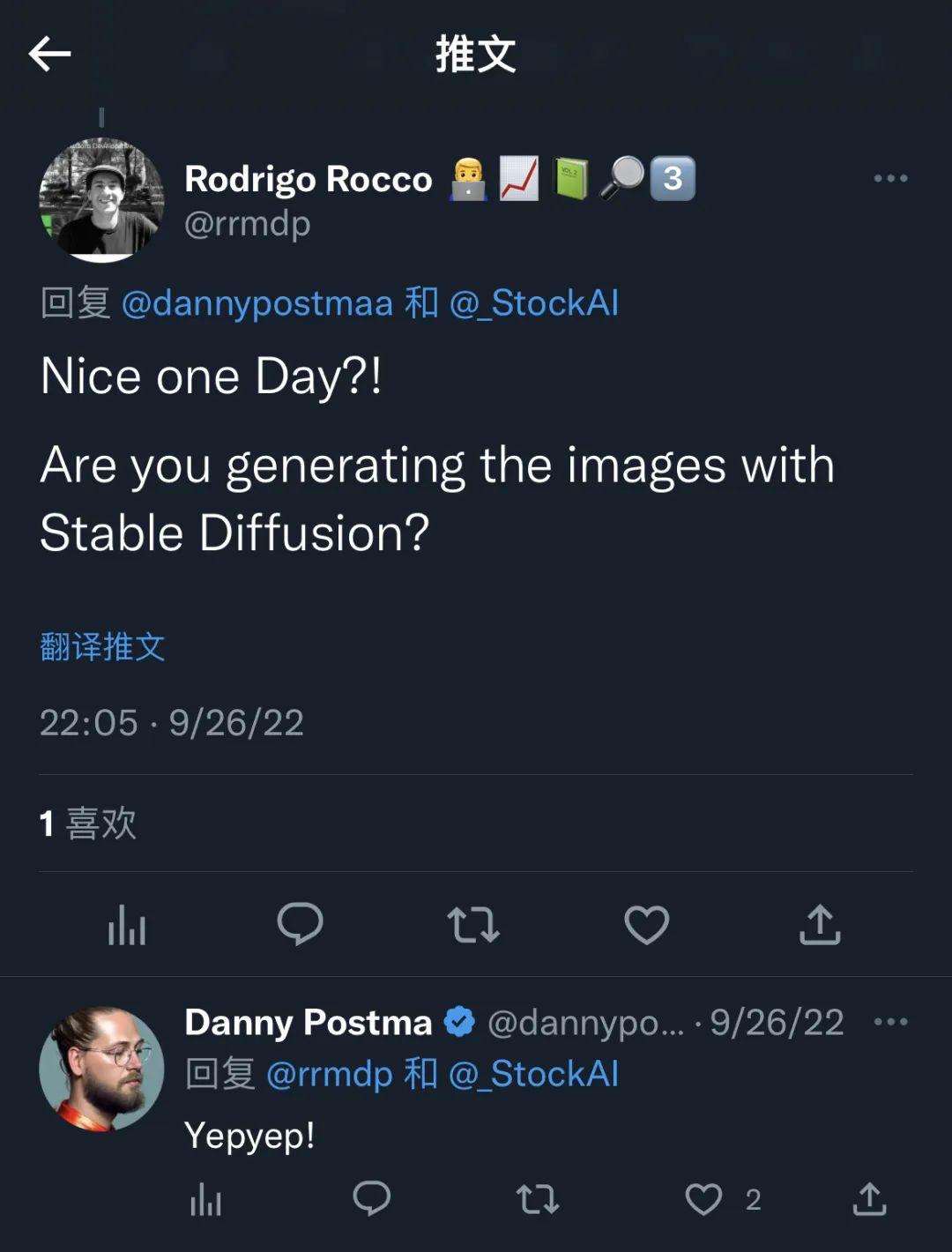Three Ways AI Startups Die: Will They Perish in the Winter or Evolve?
-
A few days ago, NVIDIA released its Q3 2024 financial report, with results far exceeding expectations—Q3 revenue reached $18.12 billion, a 205.5% year-over-year increase; operating profits hit $10.42 billion, up 1633.7% YoY.
One can't help but wonder: where is the limit to NVIDIA's potential?
While some celebrate, others struggle. Almost simultaneously with NVIDIA's triumphant news, Graphcore, a UK-based AI chip unicorn once seen as a potential competitor to NVIDIA, announced layoffs of most of its China-based employees and halted sales in the country.
Although Graphcore attributed this move to U.S. export restrictions on China.
However, this company that was valued at nearly $3 billion three years ago seems to have reached a dead end. It is reported that Graphcore's revenue in 2022 was $2.7 million, a 46% year-on-year decrease, with losses expanding by 11%. In October of this year, Graphcore disclosed the need to raise funds to maintain operations, but no further financing announcements have been made since then.
To cut costs, Graphcore announced a round of layoffs in September last year, reducing its workforce from 620 employees in October 2022 to 418 by October 2023. Now, after abandoning the Chinese market, the situation is likely to worsen.
Beyond Graphcore, many once-promising AI startups have either collapsed after a brief moment in the spotlight, are barely surviving in the 'ICU,' or may quietly fade away under the wheels of time.
Successful companies are all alike, but unsuccessful ones fail in their own ways. This article selects several 'failed' startup cases and combines them with an old essay by YC founder Paul Graham to explore the common pitfalls that startups often encounter.
A year ago, the official announcement of the collapse of Argo AI, a super unicorn in L4 autonomous driving, left peers with a sense of melancholy and uncertainty.
Argo AI was founded in 2016, at a time when the autonomous driving landscape seemed to have an endless supply of venture capital.
Just three months after its establishment, then Ford CEO Mark Fields announced a $1 billion investment in Argo AI. In 2019, Volkswagen injected $2.6 billion into Argo AI, jointly controlling the company with Ford and expanding their collaboration into the electric vehicle and autonomous driving sectors.
By 2021, Argo AI had conducted extensive development and testing in over eight cities across the U.S. and Germany. In May 2022, Argo AI launched commercial pilot programs for autonomous driving in Miami and Austin, including partnerships with Lyft to advance autonomous taxi services and with Walmart to deploy driverless delivery services.
However, just as founder Bryan Salesky was ready to expand his ambitions, Ford announced that "Argo AI will be shut down and dissolved, with its employees and some components to be absorbed by Ford Motor Company and Volkswagen AG."
The reason is simple: it was a financial black hole.
At the time, Ford CEO Jim Farley stated that the large-scale commercialization of autonomous vehicles would require billions of dollars in investment and at least five more years. The company decided to focus on more immediately achievable driver-assistance technologies rather than Argo AI's full self-driving goals.
Volkswagen CEO Oliver Blume added that the company's goal is to provide customers with the most powerful features in the shortest possible time while ensuring cost-effective development.
A study by the U.S. National Institute of Standards and Technology found that 90% of technological achievements disappear during the transition from laboratory prototypes to marketable products, a phase referred to as the 'Valley of Death'.
One of the primary reasons for this 'Valley of Death' is the lack of funding and resources.
Thus, in an era where the golden age has passed and global liquidity is shrinking, even the two major backers had to 'reluctantly' let go of Argo AI, which lacked short-term profitability.
However, the latest news is that Argo AI's founder, Bryan Salesky, is making a comeback with a new autonomous trucking company called Stack AV, backed by SoftBank Group's $1 billion investment.
As for whether Stack AV can achieve with $1 billion what Argo AI couldn't with $3.6 billion, we can only wait and see. Perhaps it's a case of 'one sows and another reaps.'
Compared to well-funded companies like Argo AI, some AI startups don't even have the luxury to burn cash.
As 2023 began, Stock AI, a startup providing free AI-generated stock images, officially announced its shutdown.
Founder Danny Postma stated that operating an AI-driven startup like StockAI is highly costly, and their current paying user base couldn't cover these expenses, forcing them to make changes.
Notably, the company lasted only 4 months from founding to closure.
Meanwhile, the AIGC field has unicorns like Midjourney and StabilityAI. Stability AI reached a $1 billion valuation in under three years, while Midjourney rejected VC funding - its 40-person team generated over $100 million annually with a $1 billion valuation.
How does Midjourney, which declined VC funding, make money? Rather than relying on membership fees, it's more about the competitiveness of its product.
On one hand, Midjourney can generate images at the level of professional photographers and illustrators with just simple prompts.

Oops, let's try that again!

On the other hand, Midjourney has also become a fascinating artistic social space, where over 14 million users voluntarily act as 'external contributors.'
With the virtuous cycle of data acquisition—model training—iterative updates, Midjourney's image generation quality has continuously improved to become industry-leading, and users don't need to deploy any local hardware to use it. As a result, paid memberships have become a natural progression.
Now, let's take a look at the quality of Stock AI, another AI painting tool.

Actually, it's not bad at all! So why isn't Stock AI gaining traction?
The answer came from the founder's own revelation. When asked if Stock AI used Stable Diffusion to generate images, Danny Postma excitedly replied: "Yepyep!"

For many startups, leveraging open-source ecosystems might seem like a blessing from heaven, but it's often more complicated than it appears.
Take AI painting as an example. When it first became popular, many experienced long queues in mini-programs, sometimes lasting several hours. This happens because a typical server cluster can only support simultaneous creation by a few hundred users. When concurrent users reach 100,000 or even hundreds of thousands, server crashes become inevitable. To avoid making users wait, companies must increase throughput by expanding server clusters or renting more hardware - all of which requires significant investment. Moreover, as user numbers grow, server fault recovery capabilities must keep pace, leading to spiraling operational costs.
In this scenario, even with tens of thousands of paying users, the revenue might only cover costs beyond labor.
And Stock AI is currently free—what if it starts charging membership fees? Good question. Why wouldn't users simply spend their money on the more capable Midjourney instead?
As for Midjourney: First, founder Holz predicted early on that computing resources would become increasingly scarce, so he began stockpiling GPUs aggressively in 2021. Second, despite annual revenues exceeding $100 million, the entire team consists of just 40 people. Third, Midjourney's service is hosted on Discord, which not only saves the additional costs of building a dedicated website or app but also drives rapid user growth.
Jasper, founded in 2021, is a SaaS company targeting groups like advertising professionals and content creators, primarily offering copywriting services—essentially a "remix" of GPT-3.
Thanks to the founder's social skills and visionary insight, Jasper was among the first to secure GPT-3's beta access, capitalizing on intermediary advantages to reap early-mover benefits. Just a year ago, Jasper was hailed as 2022's fastest-growing AI unicorn and completed a $125 million funding round in October last year.
However, plans changed when ChatGPT made its dazzling debut a month later. With virtually no moat, Jasper's predicament became self-evident.
For detailed coverage of Jasper, refer to Shidao's earlier article [Deepgram's Second Round of Layoffs: How Can Domestic AIGC Companies Avoid Becoming 'Shell Companies'?].
Summarizing the reasons behind these AI startups' 'failures,' they largely revolve around excessive burn rates, high costs, and products lacking competitiveness or differentiation—terms all too familiar to everyone.
What more specific rules can help avoid these failures? Adapted has found a 2006 article by YC founder Paul Graham titled 'The 18 Mistakes that Kill Startups', which still holds significant reference value today.
Adapted has selected 6 key points from it. Below is the adjusted original text.
Original Excerpt
1、Derivative Idea
Many applications we receive imitate existing companies. While established businesses can provide some inspiration, they are certainly not the best source. If you look back at successful startups, few began by copying others. Where did their inspiration come from? Typically, it stemmed from founders identifying specific problems that hadn't been solved yet.
Our own startup focused on developing software to generate websites for online stores. At the time, we were unique; the few websites supporting online transactions were manually coded by professional web designers at high costs. We realized that once online shopping took off, these sites would inevitably need to be generated by software—so we built one. The origin of this idea was straightforward, nothing more.
Problems that personally affect you are often the best ones to solve. Apple was born because Steve Wozniak needed a computer; Google emerged because Larry and Sergey couldn't find what they wanted online; and Hotmail was created because Sabeer Bhatia and Jack Smith couldn't email each other at work.
So, don’t just copy Facebook and make minor tweaks—look elsewhere for inspiration. Don’t be influenced by existing companies and rehash their ideas; instead, seek out unsolved problems and imagine what kind of company could solve them. Ask yourself: What are people complaining about or longing for?
2、没有明确的目标用户Having No Specific User in Mind
如果你不了解用户,就不可能作出他们喜欢的东西。在前面我曾经提到过,大多数成功的初创公司,都是从解决创始人遇到的问题开始的。这里面有这样一条规则:你所创造的财富是跟你对问题的理解程度成正比的;而你最了解的就是你自己的问题。
这条理论反过来说就是:如果你试图解决一个你不懂的问题,那无异于往自己的脖子上套绞索。
但是还是有很多创始人,喜欢假定存在某些用户愿意用他们的产品,至于这些用户会是谁,他们也不很清楚。那些创始人需要这些产品吗?不,他们不能算是目标市场。那么会是谁呢?年轻人?对本地活动感兴趣的人?还是商业领域的用户?什么样的商业领域?加油站?电影制片厂?还是军工采购商?
You can certainly create products for users who are different from you. We've done it before. The problem is, you must recognize that you're stepping into a dangerous zone. It's like flying by instruments: your own intuition won't be of any help. Therefore, every move you make must be cautious, and you must frequently check your instruments.
In this case, the users are your instruments. You must adhere to the principle of "learning from practice." Any subjective speculation is not allowed; you must engage with users and observe their reactions. So, when designing products for others rather than yourself, you must convince specific users to use your product; if you can't do this, failure is inevitable.
3. Raising Too Little Money
Most successful startups accept investment at some stage. Like having multiple founders, statistically, it's a reliable move. So, how much investment should you accept?
Startup funding is measured in time. Every startup that isn't yet profitable (and almost all startups are unprofitable at the beginning) has a certain amount of time before the money runs out. This period is often metaphorically called the 'runway.' It's a good metaphor because it reminds you that when the money runs out, you either take off or crash.
Too little money means you don't have enough runway to take off. Of course, the concept of 'taking off' depends on the situation. Usually, you need to reach the next level: from just having an idea and a prototype in progress, to having a prototype ready for release, to having a product launched and experiencing significant growth. It also depends on what investors think, as they are the ones you need to convince before achieving profitability.
If you're raising funds from investors, the amount should at least be enough to get you to the next stage. Fortunately, you have some control over what the next stage is and how much it will cost. We recommend that startups set both of these metrics low at the beginning: spend as little as possible and aim to build a solid prototype as the initial goal. This approach gives you the most flexibility.
4. Raising Too Much Money
Raising too little funding is obviously not good, but is raising too much also problematic?
Yes and no. The key issue isn't the money itself, but the problems that come with it. As one venture capitalist once said, "Once you take millions from me, the clock starts ticking." VCs don't invest in you to have the money sit in a bank account while you eat instant noodles all day—they expect the money to be put to work. At minimum, you'll need a decent office and some staff. This changes your work environment—not necessarily for the better. Now most of your team are employees rather than co-founders. They won't be as committed as you; they'll need someone to tell them what to do; worse yet, some might start playing office politics.
When you raise substantial funding, your company moves to a prime location and starts bringing in more people.
More dangerously, once you secure a large sum of money, you'll experience how hard it is to turn a big ship around. Suppose your initial plan was to sell a certain product to businesses. After taking VC money, you hire salespeople for this purpose. Later you realize you should focus on consumers instead of businesses—the sales approach would be fundamentally different. What do you do then? In reality, you might not even recognize this issue. The more people you hire, the more you tend to stay the course rather than pivot.
Another drawback of pursuing large investments is the significant amount of time it consumes. The amount of money you can raise is directly proportional to the time you spend. When investments reach the millions, investors become extremely cautious. Venture capitalists never give a clear yes or no; they will endlessly schedule meetings with you. Therefore, raising a substantial amount of funding from venture capitalists is a time-consuming endeavor—potentially longer than the time it takes to build your startup. While your competitors are racing to develop their products, you likely wouldn’t want to spend all your time courting investors.
We advise entrepreneurs seeking venture capital to accept a deal as soon as they find a suitable one. If you can secure a reasonably fair amount of funding from a reputable fund without unreasonable terms, close the deal and focus on building your company. Even if you could get 30% more money elsewhere, so what? Startups are an all-or-nothing game—either you hit it big or lose everything. Wasting time shopping around for minor gains among investors is simply not worth it.
5、花销无度Spending Too Much
Sometimes it's hard to distinguish between reckless spending and insufficient funding. When money runs out, you could argue it's due to either overspending or not raising enough. The only way to tell the difference is by comparing with other startups. If you've raised $5 million and still run out of money, the likely culprit is overspending.
These days, there are far fewer startups burning through cash recklessly. Entrepreneurs seem to have learned their lesson, and starting a business has become cheaper. As of writing this article, I haven't come across many startups that are overspending. None of the companies we've invested in are doing so. (This isn't just because our investments are relatively small, but also because many companies have gone through multiple funding rounds.)
The classic way to burn money is by hiring too many people. This hurts you twice: it increases costs while slowing you down. So the faster you spend money, the longer you'll need to make it last. Many software experts understand this principle; Fred Brooks explained it in detail in The Mythical Man-Month.
We have three basic hiring recommendations: (a) Avoid hiring if possible; (b) Use equity instead of salary - this not only saves money but, more importantly, ensures your team members are invested in the company's success; (c) Only hire people who can either write code or bring in customers, because in the early stages, these are the only two things you need to do.
6、Sacrificing Users for (Hypothetical) Profits
I mentioned at the beginning that if you're building something users need, you should be fine. You might have noticed that I didn't say anything about the right business model. This isn't to say making money isn't important. I'm not suggesting entrepreneurs start companies with no hope of profitability and then try to sell them before they go under. The reason we tell founders not to worry about the business model initially is that creating something people want is much harder.
I don't fully understand why this is so difficult. It seems straightforward. Yet, only a handful of startups succeed at it. That alone shows how challenging it is.
Because making something people want is far harder than making money, you should defer thinking about the business model, just as you'd postpone minor but troublesome features for version two. In the first version, focus on solving the core problem. For startups, the core problem is creating wealth (= how much people need your product × the number of people who need it), not converting that wealth into cash.
The companies that ultimately succeed are those that put users first. Take Google as an example: they developed a search engine first and only later considered monetization. Some startup founders believe it's irresponsible not to think about business models from day one. These founders are often misled by rigid-minded investors.
If neglecting business models is irresponsible, then neglecting the product itself is ten times more irresponsible.
As Midjourney founder Holz aptly put it, relying on external investors for survival is like "having a pile of money that you're burning through—you must find more before it turns to ashes."
Summarizing the fates of these companies: If you're technologically advanced but lack funding, you might become an Argo AI—eventually rescued by a benefactor after hardships. If you're both cash-strapped and technologically mediocre, you might end up like Jasper. In reality, most companies resemble Stock AI—attempting quick profits but facing harsh realities, forced to exit prematurely.
In other words, reckless spending is certainly alarming, but the lack of a technological moat is the real problem.
Going head-to-head with the winners is foolish. For AI startups, while large models have yet to evolve to the point of omnipresence, perhaps the only sustainable path forward is to focus on specific problems and niche users, delivering excellent products that customers are willing to pay for.
It's foreseeable that more startups will perish in this capital winter. Yet, as Jennifer Neundorfer, a partner at January Ventures, puts it: "I do believe this is an evolutionary moment for startups."
